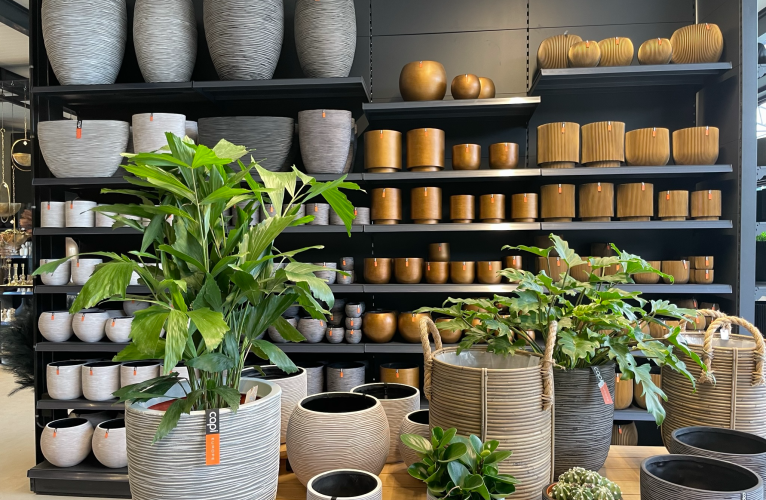Transforming Urban Spaces with Stunning Rooftop Garden Designs

In the hustle and bustle of modern cities, where concrete towers dominate skylines and green spaces are limited, the concept of a Rooftop Garden has emerged as a revolutionary solution. These elevated green sanctuaries not only enhance the beauty of urban living but also contribute to environmental sustainability, improved air quality, and a better quality of life. Through innovative Roof Garden Design, urban residents and commercial spaces can enjoy the tranquility of nature without leaving the cityscape.
The growing trend of rooftop gardening reflects the collective shift toward sustainable urban living. Homeowners, architects, and environmental designers are recognizing that rooftops can serve a purpose beyond mere shelter — they can become thriving ecosystems that blend modern architecture with natural serenity. Businesses like Green Conceptors have been at the forefront of this movement, designing and building lush, functional, and sustainable rooftop spaces that turn unused rooftops into flourishing green retreats.
The Rise of Rooftop Gardens
A Rooftop Garden is essentially a garden that is established on the roof of a building — be it residential, commercial, or industrial. These gardens can be as simple as a few planters or as complex as an expansive green landscape with seating areas, water features, and lighting systems. The growing popularity of rooftop gardens stems from several key benefits.
Firstly, they significantly improve air quality by absorbing carbon dioxide and releasing oxygen. This natural air purification system plays a crucial role in combating the pollution that plagues most urban centers. Secondly, rooftop gardens act as natural insulators, reducing heat absorption by the building and lowering indoor temperatures. This translates into reduced energy consumption and decreased reliance on air conditioning systems, making them both environmentally friendly and cost-effective.
Moreover, Rooftop Gardens contribute to stormwater management by absorbing rainwater, which reduces the burden on city drainage systems and prevents waterlogging during heavy rains. They also support biodiversity by providing a habitat for birds, butterflies, and pollinators, helping to restore balance to urban ecosystems.
The Art of Roof Garden Design
Creating an effective Roof Garden Design requires a careful blend of creativity, technical knowledge, and environmental awareness. It’s not just about placing plants on a rooftop; it’s about crafting a sustainable ecosystem that harmonizes with the building’s structure and surroundings.
Professional designers start by assessing the structural integrity of the building. Since soil, plants, and water can add significant weight, it’s essential to ensure that the roof can handle the load. Once that’s confirmed, designers plan the layout, incorporating essential elements like drainage systems, waterproofing layers, and irrigation setups.
Aesthetic and functional considerations come next. The choice of plants is critical — drought-resistant and native species are preferred for easy maintenance and resilience. Vines, shrubs, and small trees can be strategically placed to create shade and privacy, while flowering plants add vibrancy and color. Seating areas, decks, and pathways are then integrated to make the space inviting and usable.
Lighting is another important feature of a Roof Garden Design. Well-placed lights not only enhance safety but also highlight the beauty of the garden after sunset. Solar-powered lighting options are increasingly popular, maintaining the eco-friendly ethos of rooftop gardens.
Benefits Beyond Beauty
The appeal of Rooftop Gardens extends far beyond their visual charm. These green spaces provide a host of social, economic, and environmental advantages. For city dwellers living in compact apartments, rooftop gardens offer a rare opportunity to connect with nature. They become spaces for relaxation, meditation, and social gatherings — a personal sanctuary above the urban chaos.
From an economic perspective, rooftop gardens can increase property value. Buildings featuring green roofs often attract buyers and tenants looking for sustainable and aesthetic living environments. Additionally, the thermal insulation provided by rooftop greenery helps lower energy bills throughout the year, offering long-term savings.
Environmentally, rooftop gardens mitigate the “urban heat island” effect — a phenomenon where cities become significantly warmer than surrounding rural areas due to excessive heat absorption by buildings and pavements. By covering rooftops with vegetation, cities can lower ambient temperatures and promote a more balanced climate.
Innovation and Sustainability in Modern Roof Gardens
With advancements in green architecture, modern Roof Garden Design has evolved to include smart technologies and sustainable materials. Automated irrigation systems, lightweight planting media, and modular green roof panels make installation and maintenance easier than ever. Some rooftop gardens are now designed to incorporate solar panels, creating a synergy between renewable energy and greenery.
In commercial settings, rooftop gardens are being used as outdoor lounges, event venues, and even urban farms that grow fresh produce for restaurants and cafeterias. Schools and hospitals have also adopted rooftop gardens as educational and therapeutic spaces, allowing people to experience the healing power of nature.
The Future of Urban Green Living
As cities continue to expand and green spaces shrink, the importance of integrating nature into architecture cannot be overstated. Rooftop Gardens represent a perfect fusion of innovation, sustainability, and beauty — transforming dull rooftops into vibrant ecosystems that benefit people and the planet alike.
Companies like Green Conceptors are leading this green revolution by pushing the boundaries of sustainable design and turning architectural challenges into ecological opportunities. Through visionary Roof Garden Design, they’re proving that even in the densest urban jungles, there’s always room for nature to bloom.
In the future, as more people embrace eco-friendly living and sustainable design principles, Rooftop Gardens will no longer be a luxury but a standard part of urban architecture. They symbolize not just aesthetic progress but also a collective commitment to restoring the balance between nature and modern life — one rooftop at a time.


